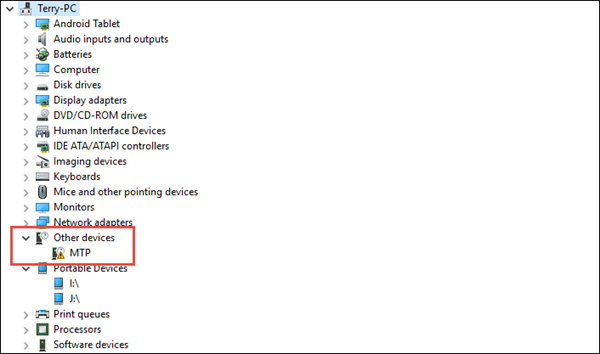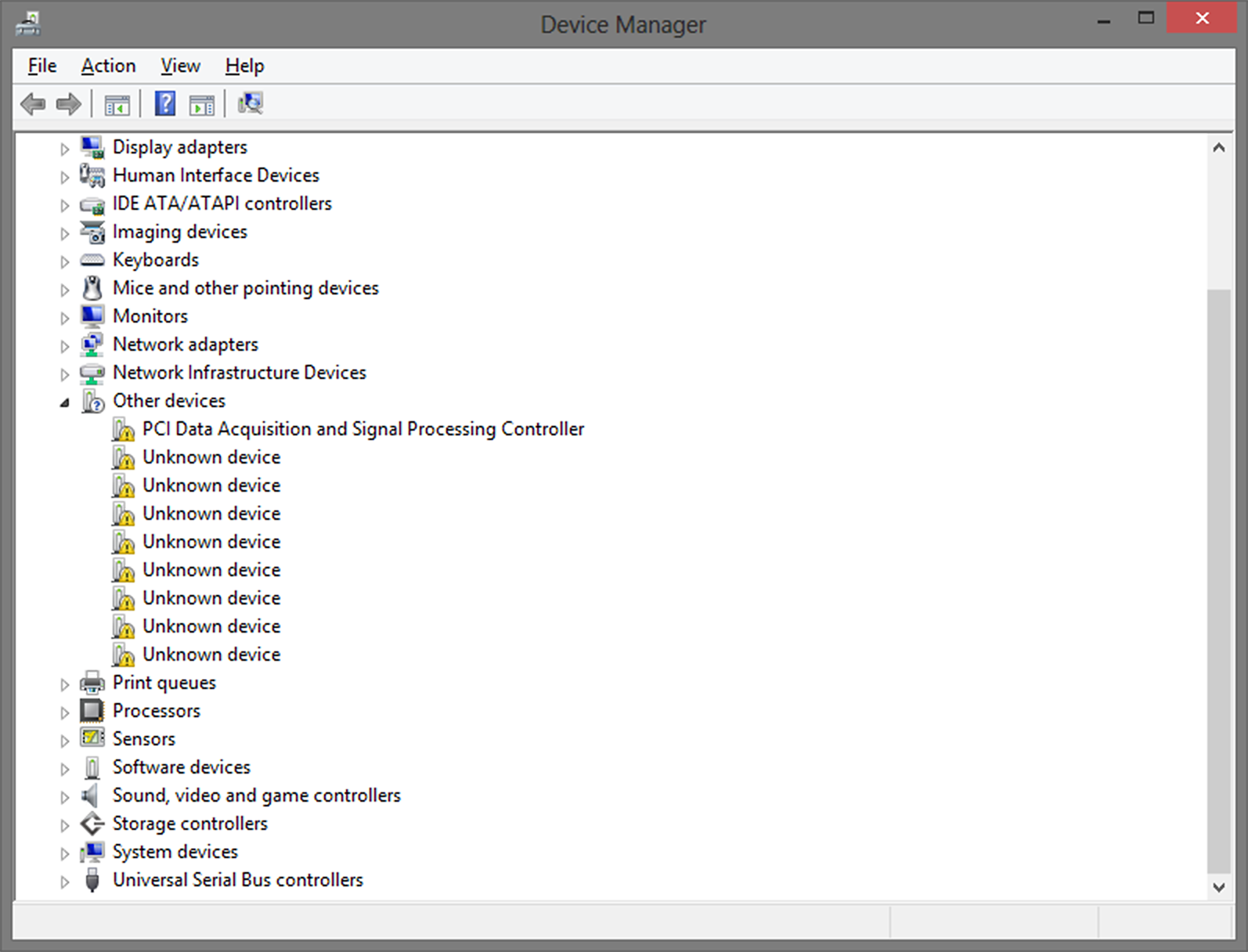Unknown Usb Device Driver Windows 10 Download
- Unknown Usb Device Driver Windows 10 Download Windows 7
- Unknown Usb Device Driver Download Windows 10
- Unknown Usb Device Driver Windows 10 Download Version
- Unknown Usb Device Driver Windows 10 Download Free
- Windows Does Not Recognize Usb
If your external USB device is not recognized by Windows 10, and meet Unknown USB Device (Device Descriptor Request Failed) error in Device Manager, use solutions here to troubleshoot and fix the error.
How to Identify and Install Unknown Device Drivers on Windows How to Find Unknown Device Drivers on Windows 7/8/10sub link https://www.youtube.com/muhammedsh. Connect your device which is not being recognized by Windows. You will see an Unknown USB device (Device Descriptor Request Failed) with the yellow sign in Universal Serial Bus controllers. Now right-click on it and click Uninstall to remove them. Restart your PC and the drivers. To correct the error, you will have to download the driver again by following these steps. Right-click on your PC Start button and open Device Manager Double click LPT and COM ports then locate the Prolific USB to Serial Driver and right-click it so you can select Update Driver For driver software click My computer.
As you have noticed, the USB Device in Device Manager has a yellow triangle on it:
The error can be caused by hardware issues. So first, follow below simple instructions to do the troubleshooting.
1. Try the device on a different USB port. This will figure out if problem is caused by a broken port.
2. Connect the device to another PC. This will figure out if the external device has problem.
If there is no problem with the USB port and the device, read on and try the following methods. You can start at the top of the list and work your way down.
Method 1: Remove the Power Supply
Method 2: Uninstall the USB Driver in Device Manager
Method 3 : Update the USB Driver
Method 4: Disable Fast Startup
Method 5: Change the USB Selective Suspend Settings
Method 1: Remove the Power Supply
This method will fix the problem magically if the problem is caused by Power Supply.
1. Remove the Power Supply plug from PC.
2. Re-plug in the Power Supply.
3. Restart the PC and connect the device to the USB port.
Method 2: Uninstall the USB Driver in Device Manager
Follow these steps:
1. Open Device Manager and expand category Universal Serial Bus Controllers and locate the USB device which is not being recognized by Windows.
2. Right-click on the device and select Uninstall from the context menu.
3. After finishing the uninstallation, restart your PC then Windows will reinstall the device automatically.
Method 3 : Update the USB Driver
The problem can be caused by faulty USB driver. In this case, updating driver would fix the problem.
If you’re not confident playing around with drivers manually, you can do it automatically with Driver Easy.
Driver Easy will automatically recognize your system and find the correct drivers for it. You don’t need to know exactly what system your computer is running, you don’t need to risk downloading and installing the wrong driver, and you don’t need to worry about making a mistake when installing.
You can update your drivers automatically with either the FREE or the Pro version of Driver Easy. But with the Pro version it takes just 2 clicks (and you get full support and a 30-day money back guarantee):

1. Downloadand install Driver Easy.
2. Run Driver Easy and clickScan Nowbutton. Driver Easy will then scan your computer and detect any problem drivers.
3. Click theUpdate button next to a flagged USB driver to automatically download and install the correct version of this driver (you can do this with the FREE version). Or clickUpdate All to automatically download and install the correct version ofallthe drivers that are missing or out of date on your system (this requires the Pro version – you’ll be prompted to upgrade when you click Update All).
Method 4: Disable Fast Startup
If Windows is booting quickly,the external device may not be detected before the boot is completed, then the problem will occur. In this case, disabling the fast boot option in Power Options can resolve the problem.
1. Press Win+R (Windows logo key and R key) at the same time. A Run dialog box will appear.
2. Type control in the run box and click OK button. This is to open Control Panel.
3. View by Large Icons and click on Power Options.
4. Select Choose what the power buttons do in left pane.
5. Click on Change settings that are corrently unavailable.
6. Under Shutdown settings, uncheck the box next to Turn on fast startup (recommended). Then click on Save changes button.
7. Restart your PC and see if the problem resolves. Note your PC will boot a little slower.
Method 5: Change the USB Selective Suspend Settings
Follow these steps:
1. In Power Options,click on Show additional plans. (If you tried Method 2, you must know how to go to Power Options. If not, go back to Method 2 and refer the steps to open Power Options.)
2. Click Change settings that are currently unavailable.
3. Select High performance and click on Change plan settings.
4. Click on Change advanced power settings.
5. Click on Change settings that are currently unavailable.
6. Locate USB settings and expand it.
7. Expand USB selective suspend setting. Disable both On battery and Plugged in settings.
Unknown Usb Device Driver Windows 10 Download Windows 7
8. Click Apply button and restart your computer.
After using methods in this post, you must resolve the Device Descriptor Request Failed error for Windows 10.
-->Versions supported
- Windows 10
- Windows 8.1
Applies to
- Device manufacturers of CDC Control devices
Microsoft-provided in-box driver (Usbser.sys) for your Communications and CDC Control device.
In Windows 10, the driver has been rewritten by using the Kernel-Mode Driver Framework that improves the overall stability of the driver.
- Improved PnP and power management by the driver (such as, handling surprise removal).
- Added power management features such as USB Selective Suspend.
In addition, UWP applications can now use the APIs provided by the new Windows.Devices.SerialCommunication namespace that allow apps to talk to these devices.
Usbser.sys installation
Load the Microsoft-provided in-box driver (Usbser.sys) for your Communications and CDC Control device.
Note
If you trying to install a USB device class driver included in Windows, you do not need to download the driver. They are installed automatically. If they are not installed automatically, contact the device manufacturer. For the list of USB device class driver included in Windows, see USB device class drivers included in Windows.
Windows 10
In Windows 10, a new INF, Usbser.inf, has been added to %Systemroot%Inf that loads Usbser.sys as the function device object (FDO) in the device stack. If your device belongs to the Communications and CDC Control device class, Usbser.sys is loaded automatically.You do not need to write your own INF to reference the driver. The driver is loaded based on a compatible ID match similar to other USB device class drivers included in Windows.
USBClass_02
USBClass_02&SubClass_02
- If you want to load Usbser.sys automatically, set the class code to 02 and subclass code to 02 in the Device Descriptor. For more information, see USB communications device class. With this approach, you are not required to distribute INF files for your device because the system uses Usbser.inf.
- If your device specifies class code 02 but a subclass code value other than 02, Usbser.sys does not load automatically. Pnp Manager tries to find a driver. If a suitable driver is not found, the device might not have a driver loaded. In this case, you might have to load your own driver or write an INF that references another in-box driver.
- If your device specifies class and subclass codes to 02, and you want to load another driver instead of Usbser.sys, you have to write an INF that specifies the hardware ID of the device and the driver to install. For examples, look through the INF files included with sample drivers and find devices similar to your device. For information about INF sections, see Overview of INF Files.
Note
Unknown Usb Device Driver Download Windows 10
Microsoft encourages you to use in-box drivers whenever possible. On mobile editions of Windows, such as Windows 10 Mobile, only drivers that are part of the operating system are loaded. Unlike desktop editions, it is not possible to load a driver through an external driver package. With the new in-box INF, Usbser.sys is automatically loaded if a USB-to-serial device is detected on the mobile device.
Windows 8.1 and earlier versions
In Windows 8.1 and earlier versions of the operating system, Usbser.sys is not automatically loaded when a USB-to-serial device is attached to a computer. To load the driver, you need to write an INF that references the modem INF (mdmcpq.inf) by using the Include directive. The directive is required for instantiating the service, copying inbox binaries, and registering a device interface GUID that applications require to find the device and talk to it. That INF specifies 'Usbser' as a lower filter driver in a device stack.
The INF also needs to specify the device setup class as Modem to use mdmcpq.inf. Under the [Version] section of the INF, specify the Modem and the device class GUID. for details, see System-Supplied Device Setup Classes.
For more information, see this KB article.
Configure selective suspend for Usbser.sys
Starting in Windows 10, Usbser.sys supports USB Selective Suspend. It allows the attached USB-to-serial device to enter a low power state when not in use, while the system remains in the S0 state. When communication with the device resumes, the device can leave the Suspend state and resume Working state. The feature is disabled by default and can be enabled and configured by setting the IdleUsbSelectiveSuspendPolicy entry under this registry key:
To configure power management features of Usbser.sys, you can set IdleUsbSelectiveSuspendPolicy to:
'0x00000001': Enters selective suspend when idle, that is, when there are no active data transfers to or from the device.
'0x00000000': Enters selective suspend only when there are no open handles to the device.
That entry can be added in one of two ways:
Write an INF that references the install INF and add the registry entry in the HW.AddReg section.
Describe the registry entry in an extended properties OS feature descriptor. Add a custom property section that sets the bPropertyName field to a Unicode string, 'IdleUsbSelectiveSuspendPolicy' and wPropertyNameLength to 62 bytes. Set the bPropertyData field to '0x00000001' or '0x00000000'. The property values are stored as little-endian 32-bit integers.
For more information, see Microsoft OS Descriptors.
Develop Windows applications for a USB CDC device
Unknown Usb Device Driver Windows 10 Download Version
If you install Usbser.sys for the USB CDC device, here are the application programming model options:
Unknown Usb Device Driver Windows 10 Download Free

Starting in Windows 10, a Windows app can send requests to Usbser.sys by using the Windows.Devices.SerialCommunication namespace. It defines Windows Runtime classes that can use to communicate with a USB CDC device through a serial port or some abstraction of a serial port. The classes provide functionality to discover such serial device, read and write data, and control serial-specific properties for flow control, such as setting baud rate, signal states.
In Windows 8.1 and earlier versions, you can write a Windows desktop application that opens a virtual COM port and communicates with the device. For more information, see:
Win32 programming model:
.NET framework programming model: